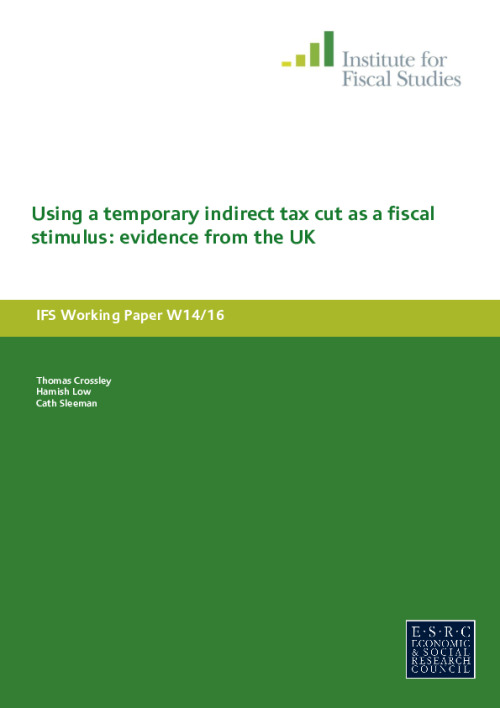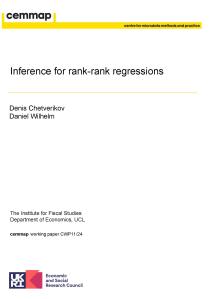Downloads

wp201416.pdf
PDF | 521.55 KB
This paper evaluates a novel form of fiscal stimulus: a temporary cut in the rate of Value Added Tax (VAT). In December 2008, the UK cut the standard rate of VAT by 2.5 percentage points for 13 months in an effort to stimulate spending. We estimate the effect of the cut on prices and spending using alternative strategies for identifying the counter-factual. Although firms initially passed through the VAT cut by lowering their prices, at least part of the pass through of the VAT cut was reversed after only a few months. Despite this early reversal, the cut raised the volume of retail sales by around 1% which on its own generates a 0.4% increase in total expenditure. The cut raised retail sales by encouraging consumers to bring forward their purchases and we find a significant fall in sales after the VAT cut ended. Thus an indirect tax cut stimulates significant intertermporal substitution in purchases.
Authors

Research Fellow University of Oxford
Hamish is the James Meade Professor of Economics at the University of Oxford, a Professorial Fellow of Nuffield College and a Research Fellow at IFS.

Research Fellow University of Michigan
Tom is a Research Fellow at IFS, a Research Professor for the Institute for Social Research at the University of Michigan.

Cath Sleeman
Working Paper details
- DOI
- 10.1920/wp.ifs.2014.1416
- Publisher
- Institute for Fiscal Studies
Suggested citation
T, Crossley and H, Low and C, Sleeman. (2014). Using a temporary indirect tax cut as a fiscal stimulus: evidence from the UK. London: Institute for Fiscal Studies. Available at: https://ifs.org.uk/publications/using-temporary-indirect-tax-cut-fiscal-stimulus-evidence-uk (accessed: 3 July 2024).
More from IFS
Understand this issue

Election Special: Your questions answered
27 June 2024

Election Special: The big issues politicians haven't spoken about
25 June 2024

Election Special: The Labour manifesto explained
14 June 2024
Policy analysis

How would the parties’ tax and spending plans affect Scotland and Wales?
28 June 2024

What are the parties’ plans for benefits and taxes?
24 June 2024

Plaid Cymru manifesto: a response
13 June 2024
Academic research

Inference for rank-rank regressions
28 May 2024

Understanding Society: minimising selection biases in data collection using mobile apps
2 February 2024

The impact of labour demand shocks when occupational labour supplies are heterogeneous
28 June 2024